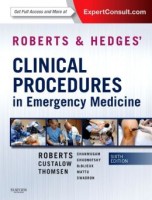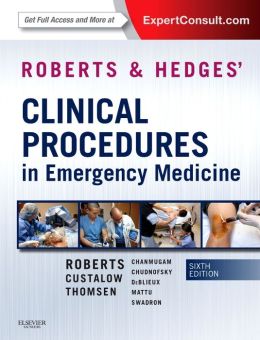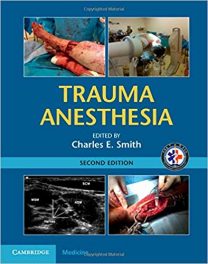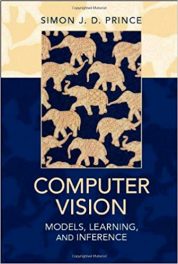 Editor-in-Chief: James R. Roberts; Senior Editor: Catherine B. Custalow; Illustration Editor: Todd W. Thomsen; Editor Emeritus: Jerris R. Hedges.
Editor-in-Chief: James R. Roberts; Senior Editor: Catherine B. Custalow; Illustration Editor: Todd W. Thomsen; Editor Emeritus: Jerris R. Hedges.
Associate Editors: Arjun S. Chanmugam, Carl R. Chudnowsky, Peter M.C. DeBlieux, Amal Mattu, and Stuart P. Swadron.
Publisher: Elsevier | Saunders – 1,527 pages
Book Review by: Nano Khilnani
Access to the text of this book is available by going to www.ExpertConsult.oom. Scratch off the Activation Code found on the Scratch-Off tab on the inside front cover of this book, enter it into the “Add a Title” box, click “Activate Now” and click the title under “My Titles.”
This is the sixth and latest available edition of this definitive book on emergency medicine that provides one of the most complete, detailed and up-to-date descriptions and discussions of procedures performed in critical situations in emergency rooms and other settings where available time is usually short and precision is imperative.
Based on rankings available on Amazon, the online bookseller, this is one of the most popular among books in the field of emergency medicine. The fact that it has undergone five other printings before this, is another strong testimonial to its value and popularity.
This is a massive textbook with 72 text chapters. It also provides access to 70 online videos on various aspects of emergency medicine. It consists of material contributed by 187 experts (mostly physicians) in various areas of this wide-ranging field. There are 124 contributors of chapters and 63 contributors of videos for online viewing. We provide instructions above for viewing the online content. A list of titles of videos is provided for easy choice.
The contents of this book are well organized into 11 sections, with each one having a number of chapters, ranging from just two to as many as ten chapters. This list below will give you a broad overview of the material found in this book based on the titles of its sections:
• I. Vital Signs and Patient Monitoring Techniques
• II. Respiratory Procedures
• III. Cardiac Procedures
• IV. Vascular Techniques and Volume Support
• V. Anesthetic and Analgesic Techniques
• V. Soft Tissue Procedures
• Gastrointestinal Procedures
• Musculoskeletal Procedures
• Genitourinary, Obstetric and Gynecologic Procedures
• Neurologic Procedures
• Ophthalmologic, Otolaryngologic, and Dental Procedures
• Special Procedures
Among the types of graphics – all with outstanding clarity and detail in full-color quality – presented in this book to aid in learning are: boxes, charts, echocardiograms, photos, rhythm strips, sketches, tables, ultrasound images, and x-rays.
What is very noteworthy in this indispensable book is the many instances of photographs grouped together in a box demonstrating the sequential steps to be taken in stabilizing a patient involved in an accident or some traumatic life-threatening event.
This book of over 1,500 pages provides some 3,500 images, most of which were taken by Dr. James Roberts in the course of his 42 years of practice of emergency medicine. These constitute ideal teaching tools.
An important value provided by this book is that the collective contributions of material by nearly 190 expert presented in this book reflect their many years acquiring knowledge, experience and skills, and developing insight and correct judgment. The benefits of this insight and judgment result in advice in this book to novices on what to do, what not to do, and how to do things. It empowers them take the right course of action in emergency situations.
The material in all the chapters follow a format with common elements, making it easier for the student or physician to understand what needs to be done in a given situation. In all the chapters, these considerations are taken into account: the procedure to be undertaken, its interpretation, the indications and contraindications, the related physiology, the available technology, and the needed equipment.
For example, in chapter 2 – Devices for Assessing Oxygenation and Ventilation – the first topic laid out is Spirometry, the measurement of the volume of air exhaled during forced expiration. The authors of this chapter Joshua Nagler and Baruch Krauss write at the outset:
“For patients with acute exacerbations of asthma and chronic obstructive pulmonary disease (COPD), accurately estimating the severity of airflow obstruction is a critical component of their care. A focused history plus physical examination is the cornerstone of assessment in the practice of emergency medicine.”
But they point out that “the history and physical examination alone, however, cannot reliably quantify airflow obstruction during attacks.” They then go on to on to discuss the various Indications (listing four of them); the Contraindications, (listing two), the Equipment (in this case the spirometer), the Procedure (calibrating the spirometer, instructing patient on its function, etc.), Interpretation (obstructive diseases are characterized by a disproportionate decrease in airflow in relation to the volume of gas exhaled, they explain).
This common step-by-step format in all the chapters makes it easier for the reader to learn the material covered in each chapter, as well as all the material in the book.
This is a comprehensive book on the common and some not-so-common procedures utilized in emergency medicine. It presents the expertise of numerous doctors in specific areas of this medical specialty with clearly-written text and an ample amount of graphics. Along with the 70 videos, this textbook of 72 chapters is not only the ideal, but necessary and essential tool for those who want to learn, understand, and practice emergency medicine.
James R. Roberts, MD, FACEP, FAAEM, FACMT is professor of emergency medicine, vice chair in the Department of Emergency Medicine, and senior consultant in the Division of Toxicology at The Drexel University College of Medicine. He is also chairman of the Department of Emergency Medicine and director of the Department of Toxicology at the Mercy Catholic Medical Center in Philadelphia, Pennsylvania.
Catherine B. Custalow, MD, PhD is a retired associate professor in the Department of Emergency Medicine at the University Of Virginia School Of Medicine in Charlottesville, Virginia.
Todd W. Thomsen, MD is affiliated with the Department of Emergency Medicine at Mount Auburn Hospital in Cambridge, Massachusetts. He is also an instructor in medicine at the Harvard Medical School in Boston, Massachusetts.
Jerris R. Hedges, MD MS, MMM is professor and dean of the John A. Burns School of Medicine at the University of Hawaii-Manoa in Honolulu, Hawaii. He is also professor and vice-dean emeritus of the Department of Emergency Medicine at the Oregon Health & Science University School of Medicine in Portland, Oregon.






